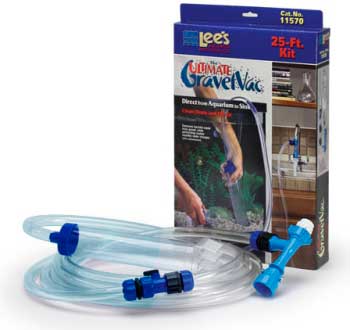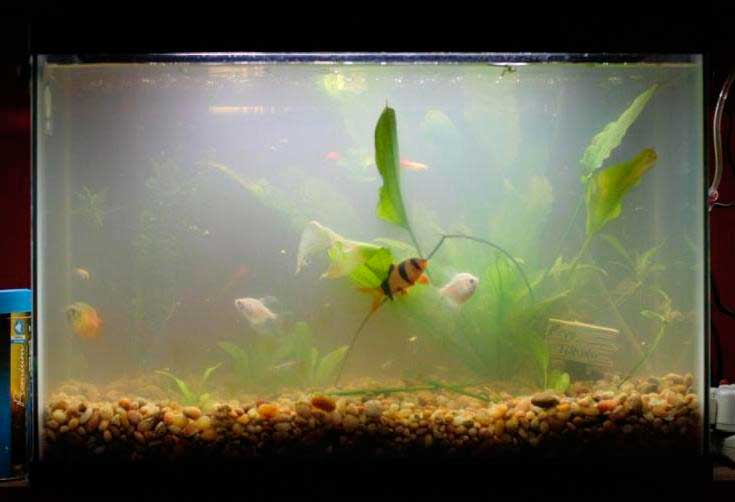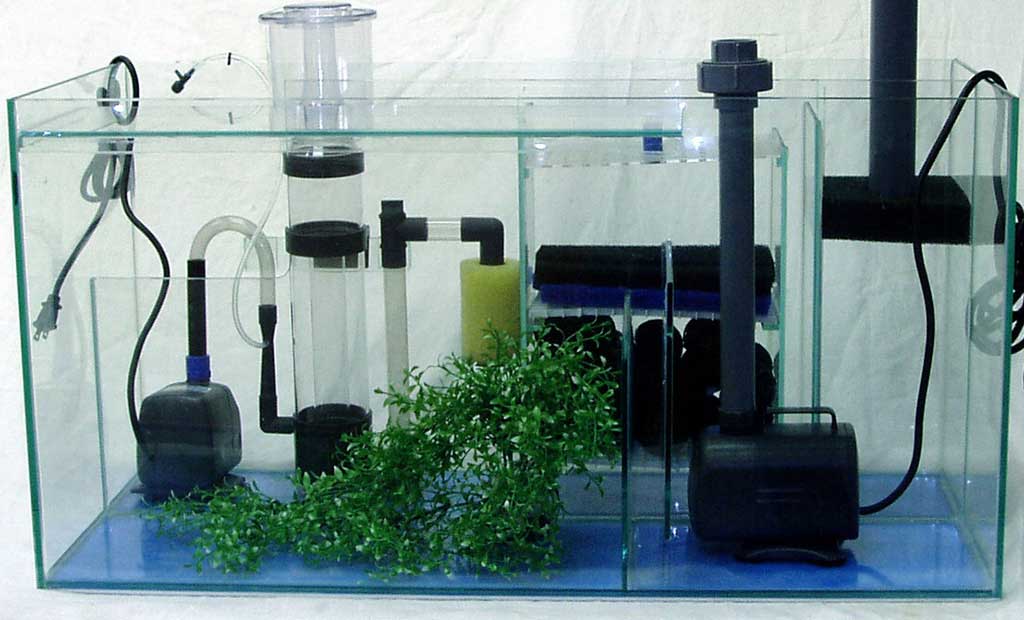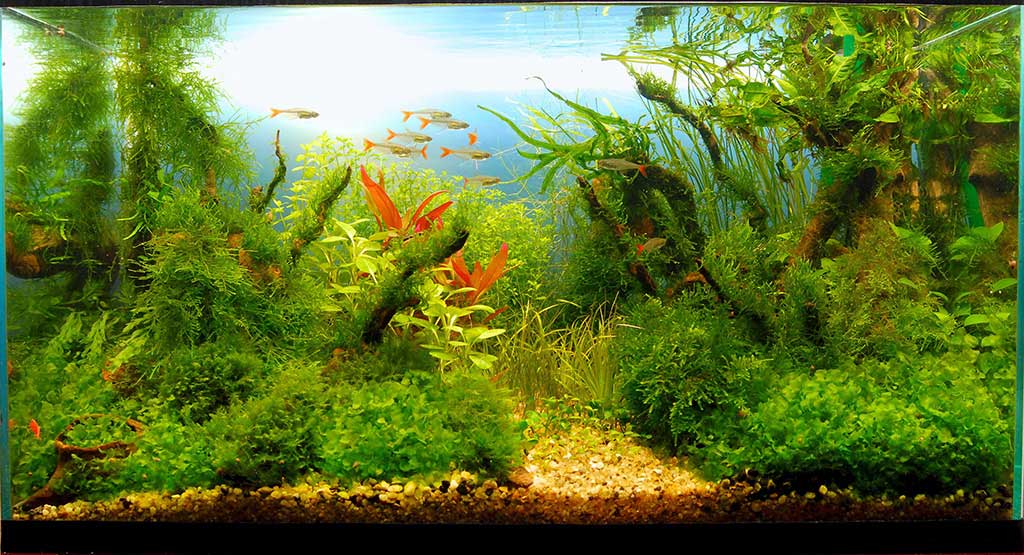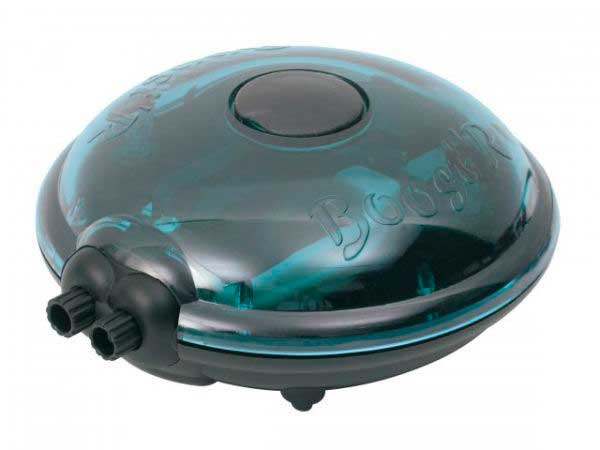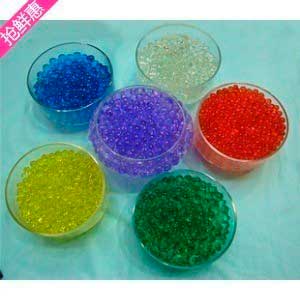A soil siphon is a necessary additional equipment for your aquarium. It is necessary, even if you have reached the pinnacle of aquaristics and can create an artificial pond, which itself will maintain its biological balance for years. After all, no one is insured against unfortunate surprises or mistakes. And if you are a beginner, recently engaged in this fascinating hobby, then you just need to familiarize yourself with such a device as a siphon for the soil.
So, what is it and what is it for? The name speaks for itself. This device is designed to clean the substrate that covers the bottom of your indoor pond.
This simple device can be used for surface or deep cleaning. If your artificial lake is really a living corner with a large number of living plants, an established biological balance, as well as the population of fish is normal, then, most likely, frequent cleaning will be unnecessary. It is only necessary to remove the uneaten remains of food. Although if you have managed to create a well-balanced biological system, then, most likely, you do not overfeed your fish, and also have enough observation to determine the necessary for feeding rate and adhere to it.
The lyrical digression is over. Let’s return to the subject of the article.
A simple soil siphon
The simplest siphon is the most common PVC pipe. In the past, other materials such as rubber were often used. The advantage of PVC is that products made of this material can be transparent. This is convenient, as it allows you to monitor not to suck any small curious fish. Also, this material is lightweight, in addition, well washable. Hygienic so to speak. The diameter of such a tube should be slightly larger than the maximum diameter of the substrate grains, so that if they get inside the device, at least did not make a blockage, stuck, somewhere or – be – somewhere in the middle.
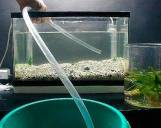
How to use this device? “It’s as easy as chocolate!”
Place an auxiliary container next to the aquarium. This can be a bucket or basin. If you plan to put some of the water back in after it has drained for fifteen minutes and all debris has settled, this vessel must be clean. Place this auxiliary vessel below the liquid level of your home pond. Now, one end of the hose is lowered to the bottom of your home lake and the other end is kept above the tank. In order for this infernal machine to work, it must be started!
Running a simple siphon
If you have a car enthusiast in your family, he can handle this task just fine. The process is very similar to draining gasoline from a car tank. The end, which is above the auxiliary vessel, we take with our lips, then draw air from the tube. In this way, we create a negative pressure that pulls the liquid behind us. As soon as it overflows over the upper edge of the wall of the upper vessel, you should quickly remove the tube from your mouth and lower it into the bucket. The water will now flow downwards by gravity, dragging away food, sludge and dead plant remains.
Tricks for starting a siphon
Even with some skill, the liquid can still get into the mouth. This is of course safer than gasoline, but close contact with biological material is also unnecessary. Therefore, you can start this underwater vacuum cleaner in a slightly different way. To do this, you should lower the entire hose into the aquarium so that it is completely filled with liquid, displacing all the air from it. When this happens, one end of the tube is held all the time in a submerged state, not letting it suck air, and the second clamped tightly with a finger and transferred to the basin. When this end will be in the bucket, below the water level of the aquarium remove the finger – it will again flow by gravity into the bucket, taking with it the dirt from the bottom surface.
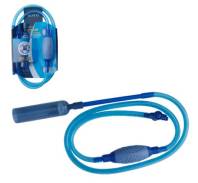
Now drive the tube close to the bottom, collecting debris from its surface. It is necessary to choose such a distance to the substrate that it is not sucked inside the device. The speed of movement of the liquid, and therefore the force with which it will entrain everything that falls within its radius of action depends on the diameter of the tube, as well as on how high the auxiliary vessel is located. In addition to its speed, the direction of flow also depends on the height of the vessel. When you collect all the debris on the surface of the substrate, it will be enough to raise one of the ends above the water level of the aquarium – the hose will be filled with air and free of liquid.
Simplicity as a disadvantage
The main advantage of such a trap is its simplicity. But its simplicity entails a number of disadvantages.
- The bottom end may pop out of the bucket at the most inopportune moment. As a consequence, cleaning the living area will become a general cleaning of the apartment. To avoid this, the end of the hose should always be held by hand. Since it is not always convenient, it should be provided for any of its attachment to the side of the basin. For example, fasten it with a plastic clamp to the clothespin, which in turn is installed on the side of the lower vessel. With such a simple device, the second hand is freed, which is always convenient. Such a clothespin will be a good addition for many purchased, more complex siphons for the ground.
- This device cannot be used for deep cleaning. However, if you use the same plastic clamp to fix the hose on a clean thin wooden or plastic stick, so that the stick protrudes beyond the end of the hose by three to four centimeters, then this stick can be slightly stirred up the soil, thus extracting debris from its deeper layers.
A soil siphon with a pear is a handy thing to have
The next type is the soil siphon, which consists of the same hose and a cup. The beaker is a rigid tube with a diameter larger than that of the hose. It can be either glass or plastic. The glass one is more fragile. Therefore, it is probably better to choose a glass made of plastic. Sometimes these devices are equipped with rubber pears, facilitating their launch. Two – three rhythmic pressing and you hear how the bucket is filled with liquid. Also not superfluous is a grid, which is often equipped with this device. It prevents the drainage of soil and small fish, is located near the exit hole of the glass. However, the grid can get clogged with the remains of plants. It can also be difficult to clean it after work.
This type of device is as easy to use as the one described above. They are started in the same way, if there is no starter chest. Once started, these devices have some advantages over a regular tube.
- For surface cleaning, this design picks up dirt from a larger area. This makes cleaning faster.
- The relatively rigid tumbler allows for deep cleaning.
We’re getting rid of the organics
To clear the substrate of organic residues to its full depth. It is necessary to stop the flow and sink the walls of the glass into it. Deepen almost to the bottom of the vessel. After that we let the liquid flow through the device again. This flow attracts soil particles with it. They inside the beaker as if boiling. The flow rate should be such that the substrate particles do not reach the outlet and do not fly into the basin for drainage. After all the dirt is drained, stop the flow by squeezing the hose with fingers or a special clamp. After that, move the glass to a new place and repeat the whole cycle.
Sometimes the drainage rate is such that you don’t have time to clean the entire bottom. Then there are two ways to do it.
- Allow the water to settle in the bucket, and after the dirt has settled, carefully pour it back into the aquarium. The same should be done when keeping plants and fish that do not like sudden changes in habitat values.
- Clean the bottom in parts. For example, in the first week of the month clean the right half of the bottom. On the third week – the left half.
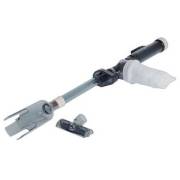
Soil siphon improved versions
There are also traps with trash traps. More often these are glass devices. They require some skills to work with them. Here the order of manipulation is slightly different. It is necessary to clamp the upper opening with a finger before lowering the device to the substrate. When you release your finger, the device fills with water, which takes the debris with it. Theoretically, this debris should remain in specially designed for it traps – pockets. The device is then lifted into the air. The procedure is repeated until complete satisfaction or exhaustion. I did not like such constructions very much. I never got used to them. Their only advantage is that there is no need to put an additional bucket and the water from the man-made lake is not drained. As far as I am concerned, this is not a very important advantage.
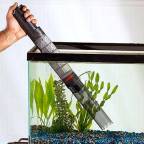
“While spaceships plow through the vastness of our universe” cleaning the substrate of a man-made biotope with a simple pipe is not prestigious….
High-tech siphon
Therefore, especially for the technocratic part of the army of aquarists, so-called aquarium vacuum cleaners were created. By design, it is really a vacuum cleaner. The pump pulls the medium through the filter, which detains debris, returning at the output water without visible dirt. I myself have not worked with such a marvel of technology yet. I can only judge from the photos that the battery compartment should be kept away from water. Or the capacity should be low. Or the device should be equipped with extension nozzles. And so, in general, the thing is very interesting. If there will be an opportunity to try it out, I will write back.
Perhaps this is the end of this brief review. Hopefully, you now have a clear idea of what a siphon for soil is, what kinds they are. Now you will be able to choose the one that is best suited for your fish farm.
